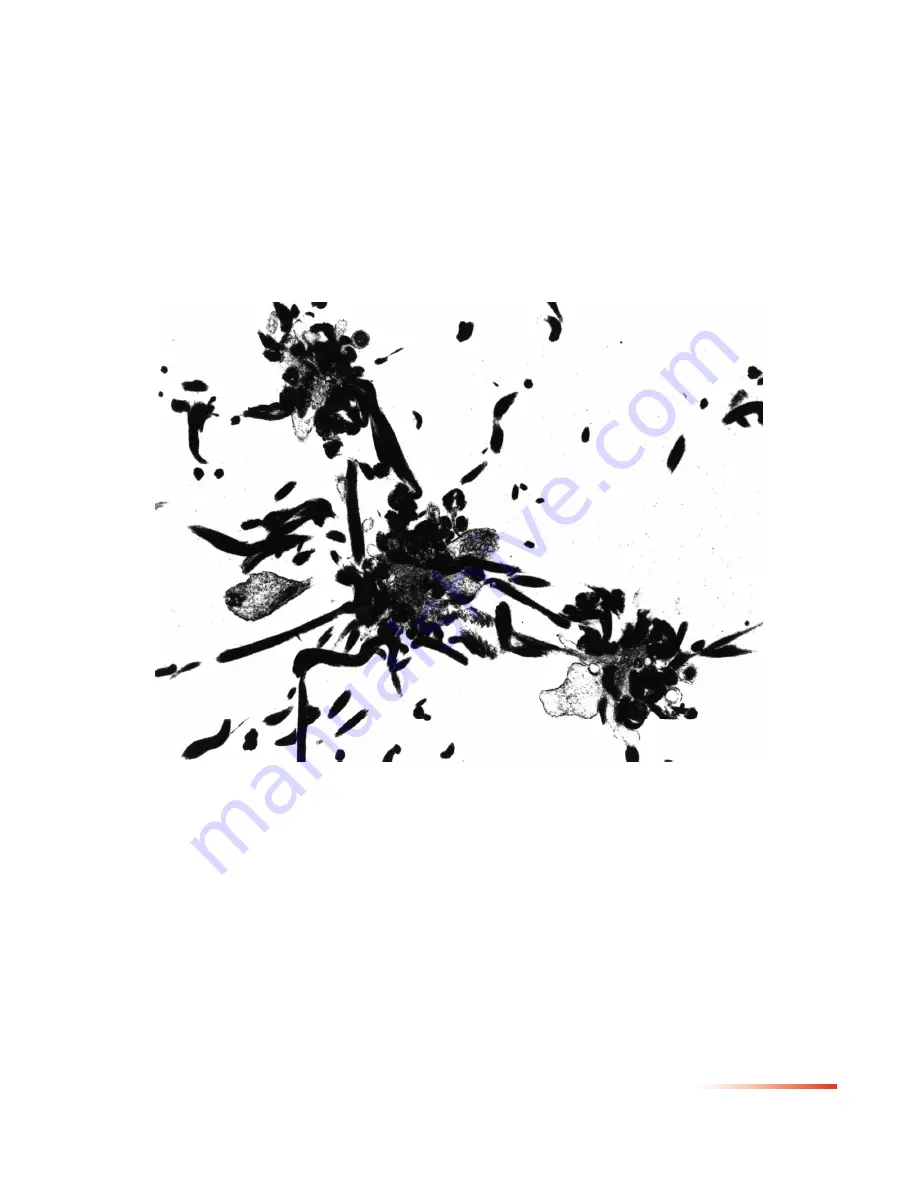
Chapter 2: Hemostasis Fundamentals 2-3
Fibrin Gel Formation
Fibrin formation begins with fibrinogen converting into fibrin monomers. The fibrin monomers
spontaneously polymerize into a fibrin gel. Gel formation is affected by the rate of thrombin formation,
the rate of thrombin neutralization, and the amount of fibrinogen.
Clot Retraction, i.e. Platelet Function
Clot retraction occurs when platelets function properly. The photograph below shows the roll of platelets
in retracting a clot. The dark lines are strands of fibrin These fibrin strands link together into a gel. The
platelets adhere to multiple nodes of the fibrin gel and cause the gel to collapse together or retract.
Fibrinolysis
Eventually, fibrin clots dissolve through the activation of the fibrinolytic system. The activated enzyme
plasmin is formed from plasminogen and breaks fibrin strands into smaller fibrin split products. The fibrin
split products do not polymerize so as this lysing progresses, the fibrin gel dissolves.
With normal hemostasis, the process of fibrinolysis occurs at much slower rates than coagulation, fibrin
gel formation, or clot retraction. Hyperfibrinolysis occurs when the clot begins to dissolve before it has
been fully formed, often returning back into a liquid.









































